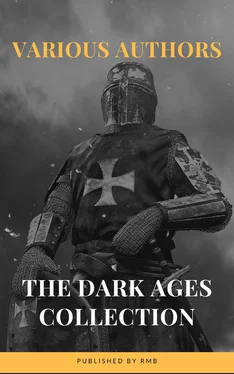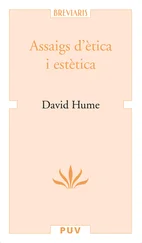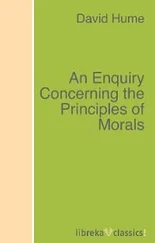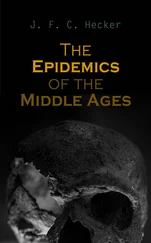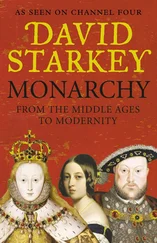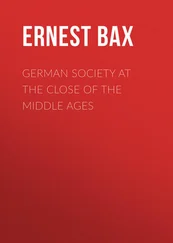The Praetorian Prefect of the East, who resided at Constantinople, and the Praetorian Prefect of Italy were in rank the highest officials in the Empire; next to them came respectively the Prefect of Illyricum, who resided at Thessalonica, and the Prefect of the Gauls. The functions of the Prefect embraced a wide sphere; they were administrative, financial, judicial, and even legislative. The provincial governors were appointed at his recommendation, and with him rested their dismissal, subject to the Emperor’s approval. He received regular reports of the administration throughout his prefecture from the Vicarii and from the governors of the provinces. He had treasuries of his own, and the payment and the food supplies of the army devolved upon him. He was also a supreme judge of appeal; in cases which were brought before his court from a lower tribunal there was no further appeal to the Emperor. He could issue, on his own authority, praetorian edicts, but they concerned only matters of detail. The most important Imperial enactments were usually addressed to the Prefects, because they were the heads of the provincial administration, and possessed the machinery for making the laws known throughout the Empire.
The exalted position of the Praetorian Prefect was marked by his purple robe, or mandyes , which differed from that of the sovran only in being shorter, reaching to the knees instead of to the feet. His large silver inkstand, his pen-case of gold weighing 100 lbs., his lofty chariot, are mentioned as three official symbols of his office. On his entry all military officers were expected to bend the knee, a survival of the fact that his office was originally not civil but military.
Rome and Constantinople, with their immediate neighbourhoods, were exempt from the authority of the Praetorian Prefect and under the jurisdiction of the Prefect of the City. 7The Prefect of Constantinople had the same general powers and duties as the Prefect of Rome, though in some respects the arrangements were different. He was the head of the Senate, and in rank was next to the Praetorian Prefects. While all the other great officials, even though their functions were purely civil, had a military character, in token of which they wore military dress and the military belt, the Prefect of the City retained his old civil character and wore the toga. He was the chief criminal judge in the capital. For the maintenance of further order the Roman Prefect had under his control a force of city cohorts, as well as police. We hear nothing of any institution at Constantinople corresponding to the city cohorts, but the police ( vigiles ) were organised as at Rome under a praefectus vigilum , 8subject to the Prefect. For the care of the aqueducts and the supervision of the markets the Prefect was responsible. One of his most important duties was to superintend the arrangements for supplying the city with corn. 9He had also control over the trade corporations ( collegia ) of the capital.
The supreme legal minister was the Quaestor of the Sacred Palace. His duty was to draft the laws, and the Imperial rescripts in answer to petitions. A thorough knowledge of jurisprudence and a mastery of legal style were essential qualifications for the post. 10
The post of Master of Offices ( magister officiorum ) had grown from small beginnings and by steps which are obscure into one of the most important ministries. 11It comprised a group of miscellaneous departments, unrelated to each other, and including some of the functions which had belonged to the pre-Constantinian Praetorian Prefects. Officium was the word for the body of civil servants ( officiales ) who constituted the staff of a minister or governor, and the Master of Offices was so called from the authority which he exercised over the civil service, but especially over the secretarial departments in the Palace.
There were three principal secretarial bureaux ( scrinia ), which had survived from the early Empire, and retained their old names: memoriae , epistularum , and libellorum . 12At Constantinople the second bureau had two departments, one for Latin and one for Greek official correspondence. The secretarial business was conducted by magistri scriniorum , 13who were in direct touch with the Emperor and were not subordinate to any higher official. They were not, however, heads of the bureaux, but the bureaux, which were under the control of the Master of Offices, supplied them with assistants and clerks. 14
With the three ancient and homogeneous scrinia was associated a fourth, 15of later origin and at first inferior rank, the scrinium dispositionum , of which the chief official was the comes dispositionum . His duty, under the control of the Master of Offices, was to draw up the programme of the Emperor’s movements and to make corresponding arrangements.
The Master of Offices was responsible for the conduct of court ceremonies, and controlled the special department 16which dealt with ceremonial arrangements and Imperial audiences. The reception of foreign ambassadors thus came within his scope, and he was the head of the corps of interpreters of foreign languages. In the Roman Empire the administrations of foreign and internal affairs were not sharply separated as in modern states, but the Master of Offices is the minister who more than any other corresponds to a Minister of Foreign Affairs. As director of the State Post ( cursus publicus ) 17he made arrangements for the journeys of foreign embassies to the capital.
One of his duties was the control of the agentes in rebus , a large body of officials who formed the secret service of the State and were employed as Imperial messengers and on all kinds of confidential missions. As secret agents they were ubiquitous in the provinces, spying upon the governors, reporting the misconduct of officials, and especially vigilant to secure that the state post was not misused. Naturally they were open to bribery and corruption. The body or schola of agentes was strictly organised in grades, and when they had risen by regular promotion, they were appointed to be heads ( principes ) of the official staffs of diocesan and provincial governors, and might rise to be governors themselves. Their number, in the East, was over 1200. 18
The Scholarian bodyguards, organised by Constantine, 19were subject to the authority of the Master of Offices, so that in this respect he may be regarded as a successor of the old Praetorian Prefect. He also possessed a certain control over the military commanders in frontier provinces. 20He became (in A.D. 396) the director of the state factories of arms. In the Eastern half of the Empire there were fifteen of these factories ( fabricae ), six in the Illyrian peninsula, and nine in the Asiatic provinces.
One of the most striking features of the administrative system was the organisation of the subordinate officials, who were systematically graded and extremely numerous. 21
Our use of the words “office” and “official” is derived from the technical meaning of officium , which, as was mentioned above, denoted the staff of a civil or military dignitary. 22Most ministers, every governor, all higher military commanders, had an officium, and its members were called officiales . Theoretically, the civil as well as the military officials were supposed to be soldiers of the Emperor; their service was termed militia , its badge was the military belt, which was discarded when their term of service expired, and their retirement from service was called in military language “honourable dismissal” ( honesta missio ). But these usages were a mere survival, and the state service was really divided into military, civil, and palatine offices. The term palatine in this connexion meant particularly the staffs of the financial ministers, the Counts of the Sacred Largesses and the Private Estates.
Читать дальше
